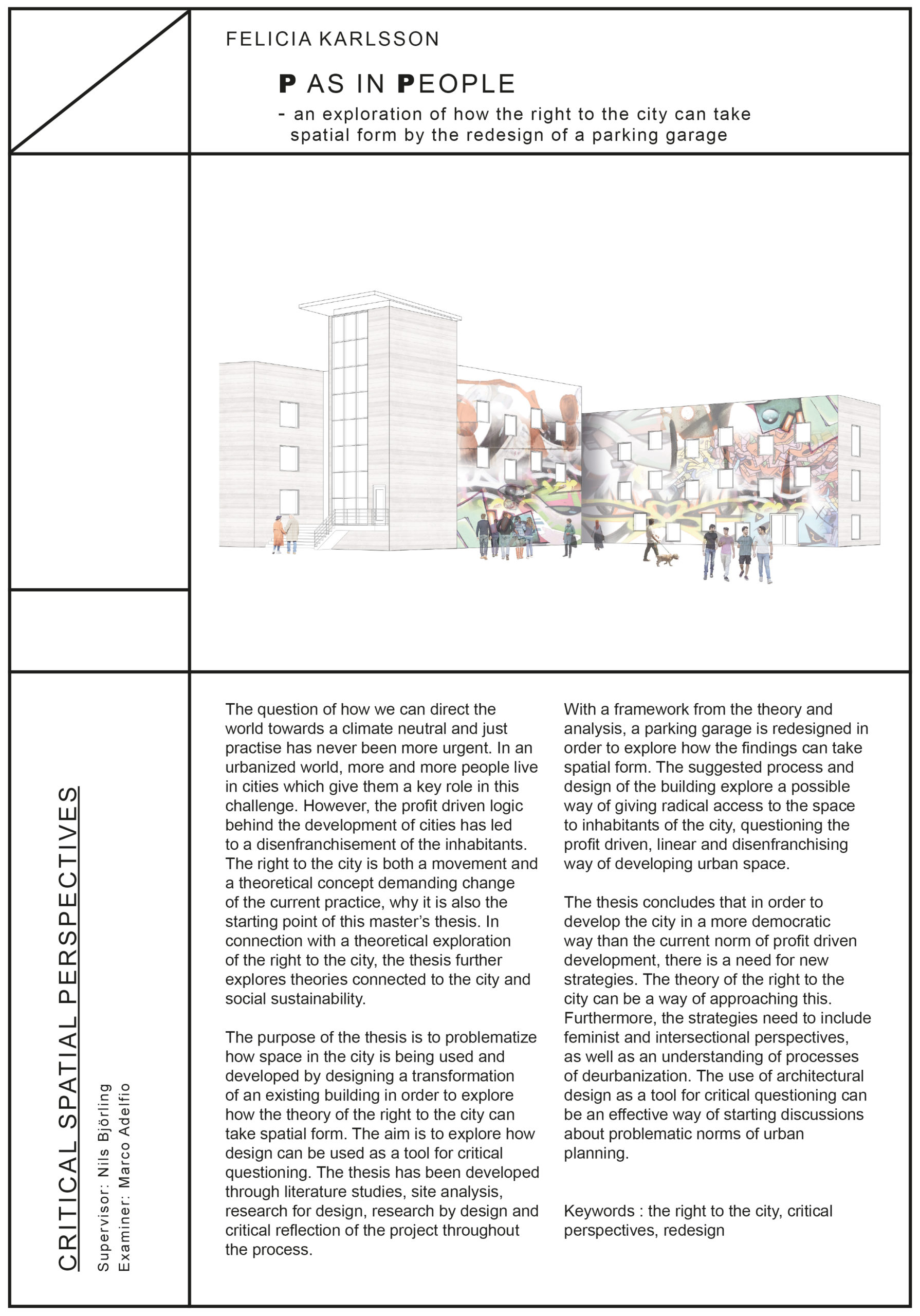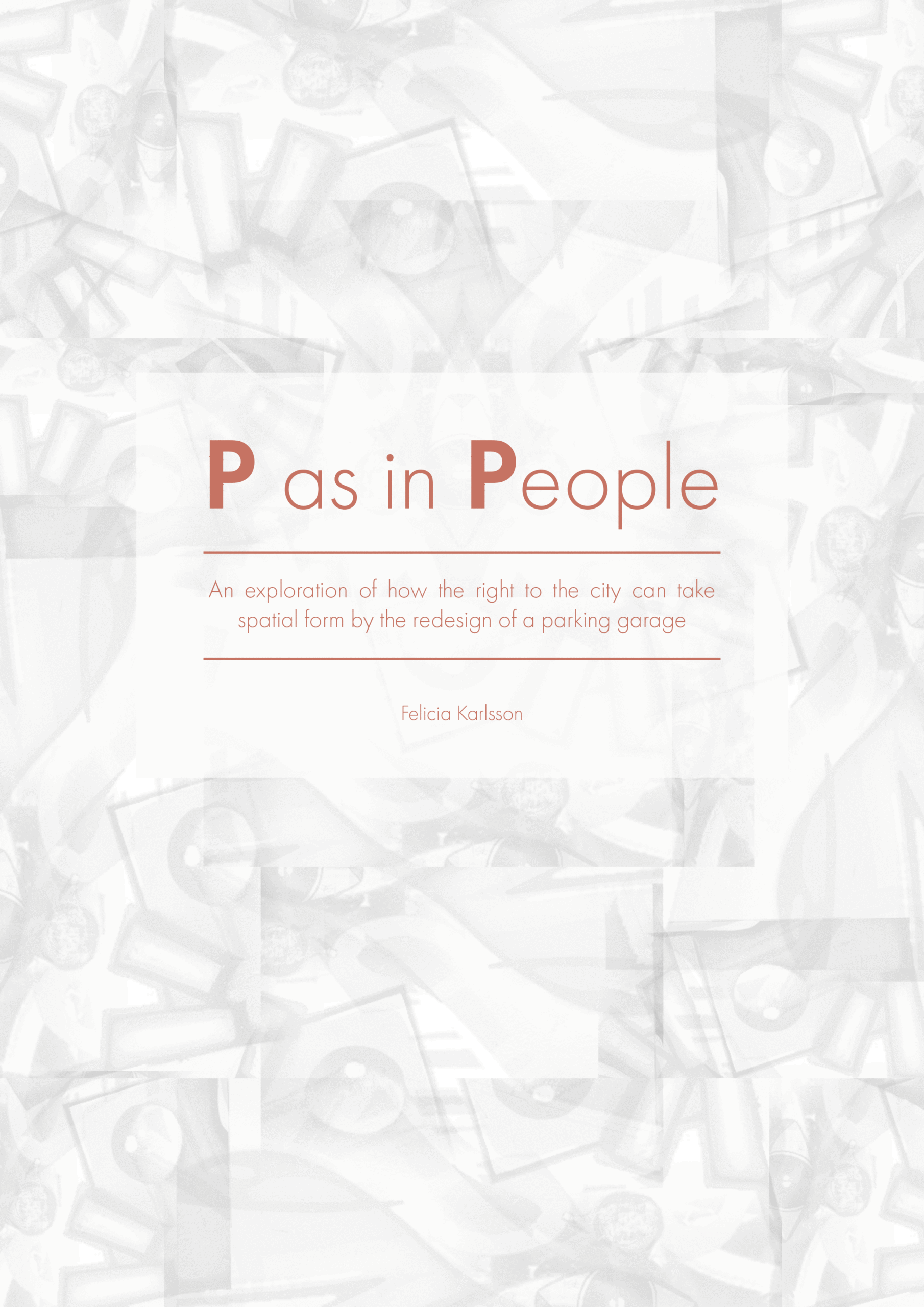P as in People
An exploration of how the right to the city can take
spatial form by the redesign of a parking garage
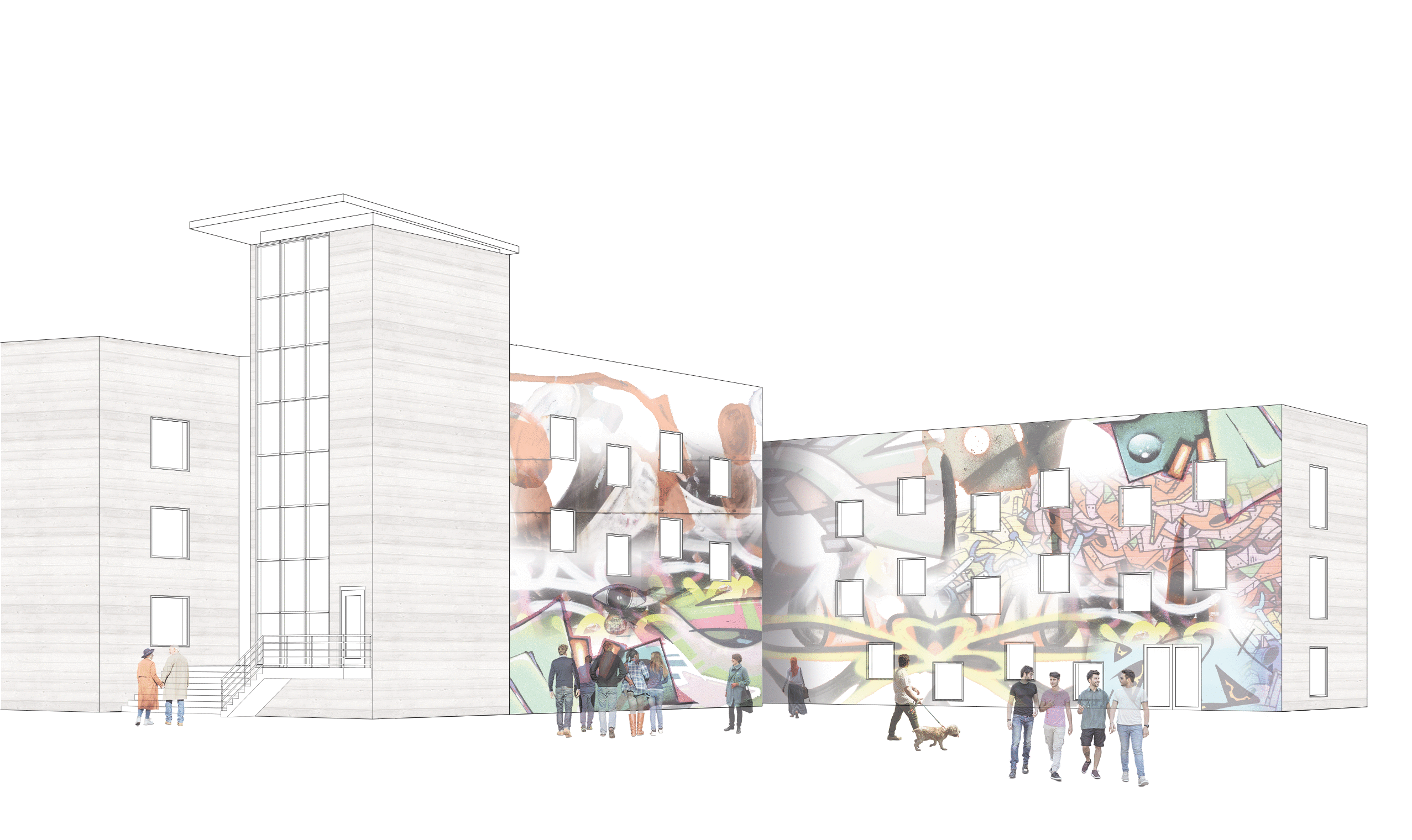
The question of how we can direct the world towards a climate neutral and just practise has never been more urgent. In an urbanized world, more and more people live in cities which give them a key role in this challenge. However, the profit driven logic behind the development of cities has led to a disenfranchisement of the inhabitants. The right to the city is both a movement and a theoretical concept demanding change of the current practice, why it is also the starting point of this master’s thesis. In connection with a theoretical exploration of the right to the city, the thesis further explores theories connected to the city and social sustainability.
The purpose of the thesis is to problematize how space in the city is being used and developed by designing a transformation of an existing building in order to explore how the theory of the right to the city can take spatial form. The aim is to discuss how architecture can be used to change linear and disenfranchising processes in the city towards more just directions, and to develop a design project that is manifesting this discussion. The aim is also to problematize the car norm and explore the possibilities of using design as a tool for critical questioning.
The type of structure redesigned in this project is a parking garage. It is a clear example of a building which is not contributing in a positive way in the challenges of climate change and disenfranchisement. Therefore, it is interesting to explore what potential the structure holds if the function is changed.
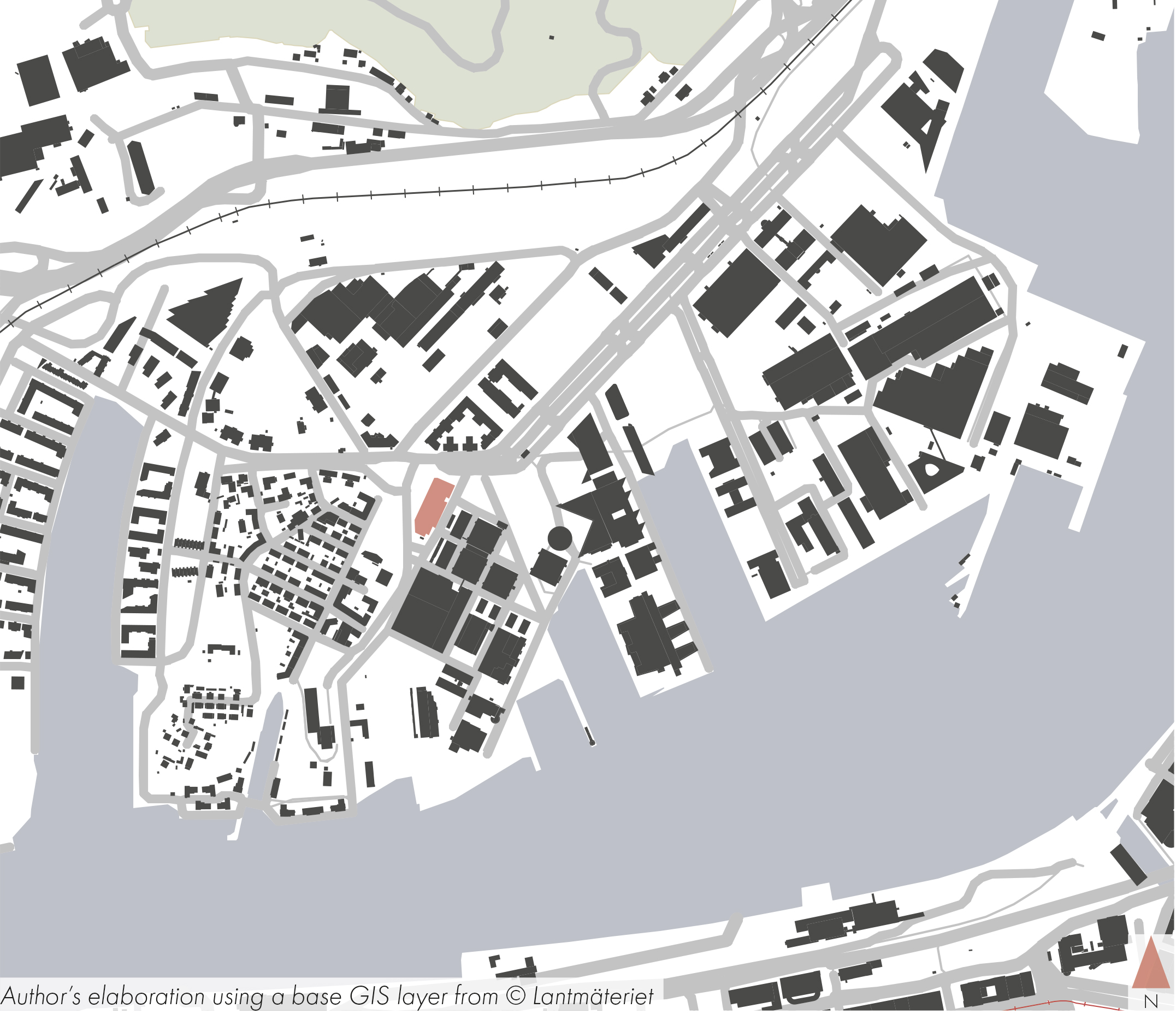
The building redesigned in the thesis is situated in Gothenburg. It has a central position at Lindholmen and a close connection to Göta Älv.
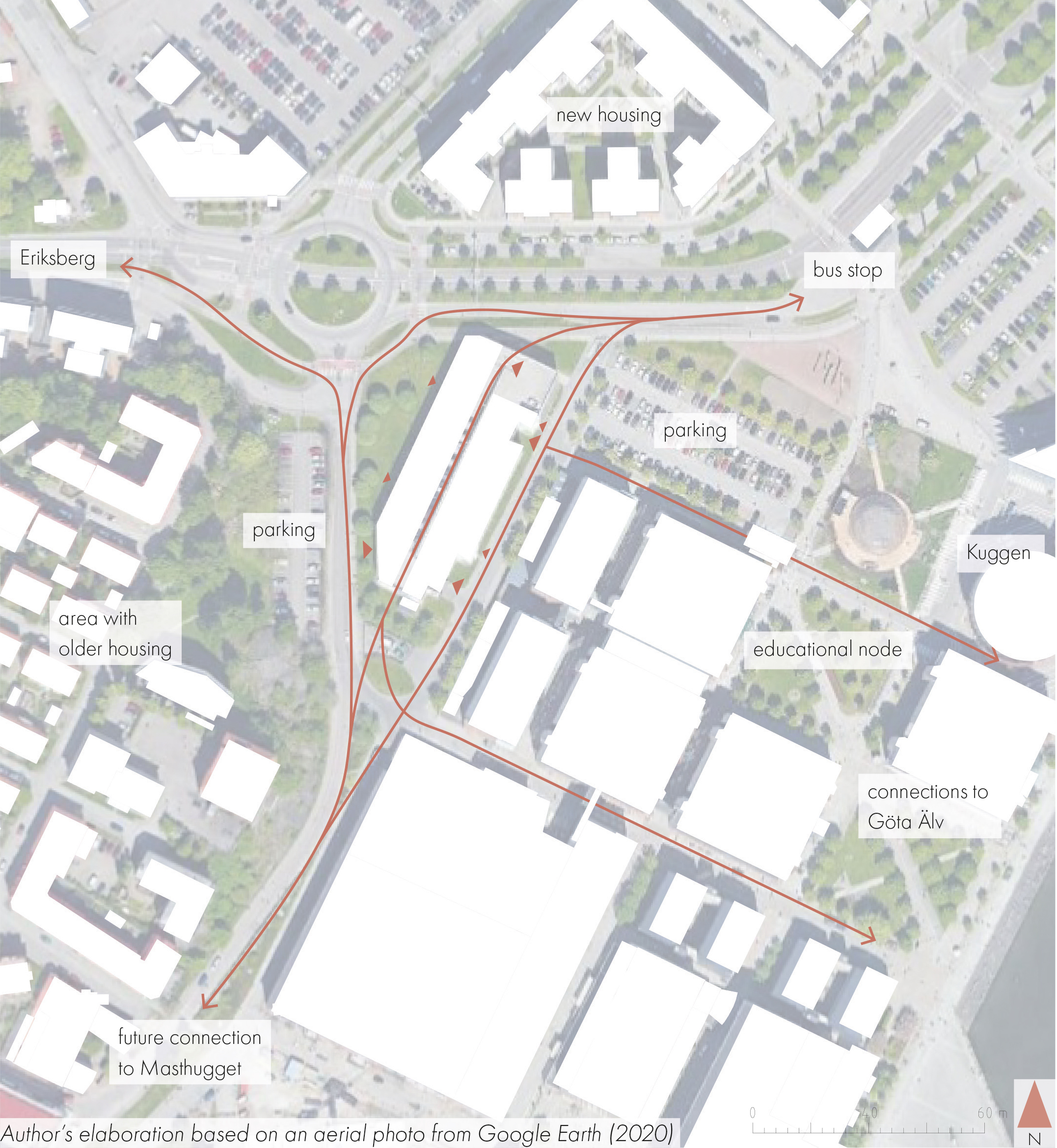
The design was developed with a framework based on the theoretical exploration of the city and an analysis of the building and its context. The suggested process and design of the building explore a possible way of giving radical access to the space to inhabitants of the city, questioning the profit driven, linear and disenfranchising way of developing urban space.



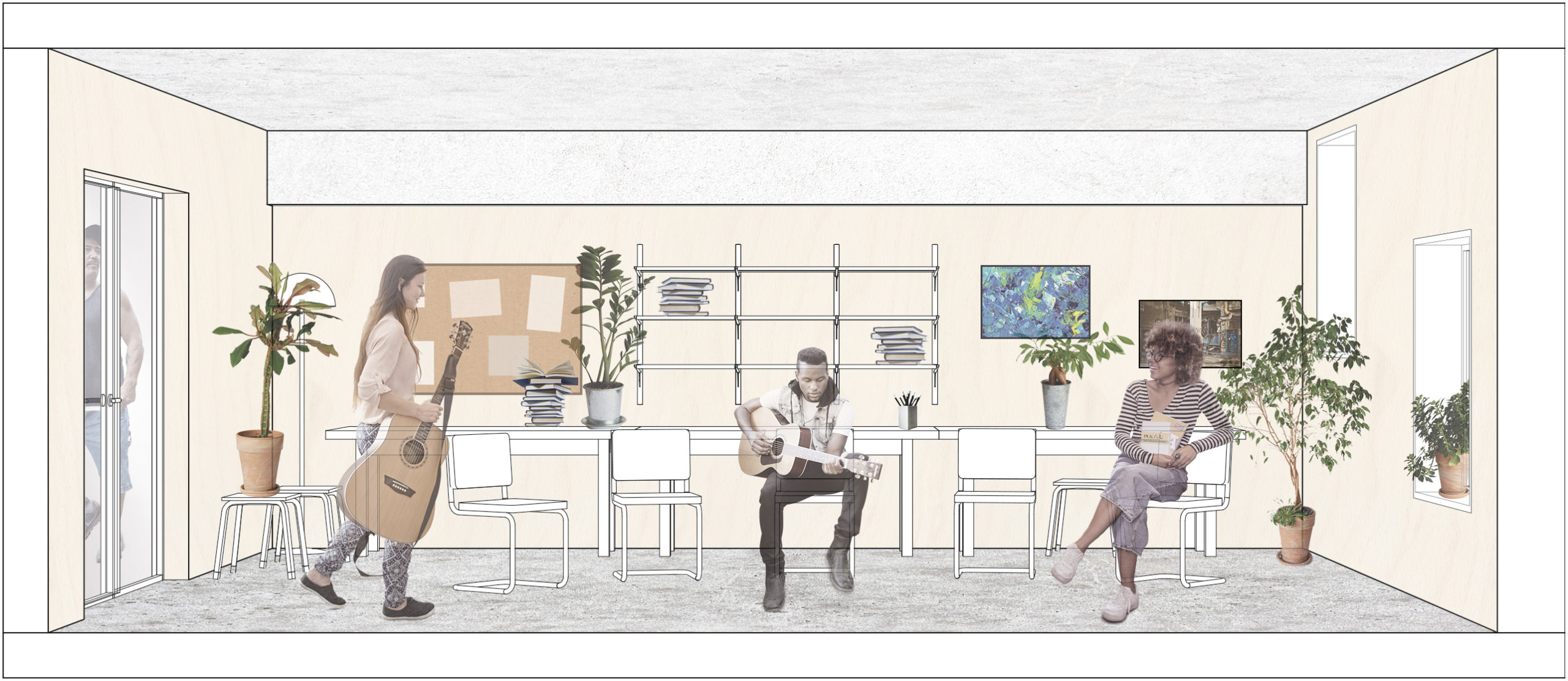
The thesis concludes that in order to develop the city in a more democratic way than the current norm, there is a need for new strategies. The theory of the right to the city can be a way of approaching this, with an emphasis of the right to appropriation and participation. Furthermore, the strategies need to include feminist and intersectional perspectives, as well as an understanding of processes of deurbanization. It is a question of discussing and lifting immeasurable values high above ones which are seemingly more rational according to the norms of today. However, in order to counteract new hierarchies and elites it is important to view urban development as an ongoing and incomplete process. Finally, the thesis concludes that the use of architectural design as a tool for critical questioning can be an effective way of starting discussions about problematic norms of urban planning.
